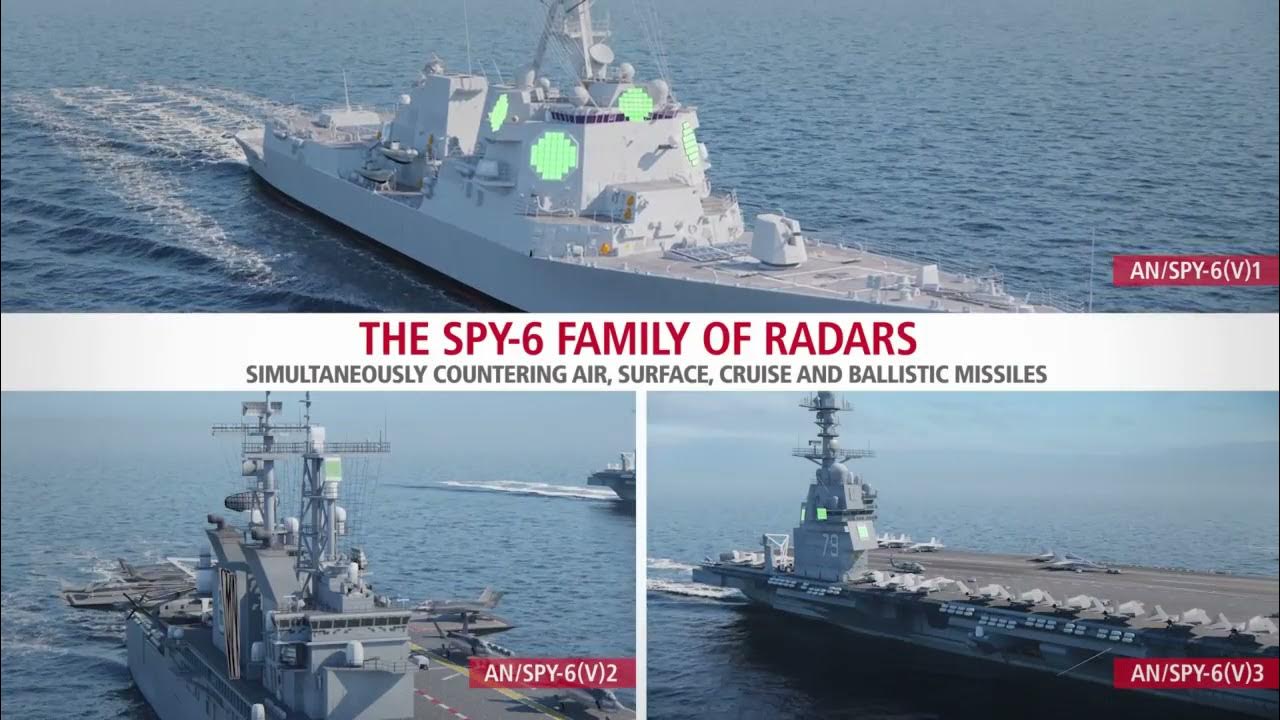
The advent of the AN/SPY-6 radar in the naval defense sector marks a monumental shift. This state-of-the-art system not only replaces the venerable AN/SPY-1 but also redefines the standards of maritime vigilance. The SPY-6 radar, with its advanced capabilities, is set to significantly bolster the U.S. Navy’s ability to detect and counter emerging threats at sea.
Who’s behind the watchtower?
At the forefront of this technological leap is the U.S. Navy, in collaboration with defense giant Raytheon and under the guidance of Rear Adm. Seiko Okano. This triumvirate has combined expertise, innovation, and strategic vision to bring the SPY-6 radar from concept to reality. The synergy of these entities underscores a commitment to maintaining naval superiority in an ever-evolving global landscape.
What is the SPY-6?
The AN/SPY-6 is the Navy’s next-generation air and missile defense radar. This system is not a singular entity but a versatile family, with variants like the (V1) for Arleigh Burke destroyers and the (V2) and (V3) for amphibious ships and aircraft carriers, respectively. Each variant is tailored to meet the specific demands of different naval platforms, ensuring comprehensive coverage across the fleet.
When does the future arrive?
Where will the SPY-6 gaze?
The Navy envisions the SPY-6 radar system being deployed across a range of naval vessels. From the advanced Flight III Arleigh Burke-class destroyers to the decks of mighty amphibious ships and aircraft carriers, the SPY-6 is set to be the Navy’s omnipresent eye. Its placement across diverse platforms ensures an unmatched surveillance umbrella over vast maritime domains.
Why the need for a new watchman?
The development of the SPY-6 is a response to evolving maritime threats, like stealth aircraft and drones, that challenge conventional radar systems. While effective, its predecessor, the AN/SPY-1, fell short against these modern challenges. The SPY-6 addresses these gaps, offering enhanced sensitivity and detection capabilities to keep pace with emerging threats.
How does the SPY-6 see beyond the horizon?
The SPY-6 radar employs cutting-edge Active Electronically Scanned Array (AESA) technology. This advancement allows for simultaneous scanning of multiple areas and tracking of diverse targets, vastly improving over previous generations. Its increased sensitivity is a game-changer, enabling the detection of smaller, more elusive targets at greater distances.
Challenges and the unfolding horizons
Despite its impressive capabilities, integrating the SPY-6 into the fleet poses logistical and technical challenges. The Navy is actively addressing these challenges, ensuring seamless deployment and operational effectiveness. Ongoing refinements and testing phases are crucial in adapting the SPY-6 to the dynamic maritime environment.
A new era of vigilance dawns
The introduction of the SPY-6 radar heralds a significant leap in naval defense, underscoring the U.S. Navy’s commitment to technological innovation and maritime security. As this new era of heightened vigilance dawns, the SPY-6 stands as a testament to the Navy’s enduring mission: to safeguard the seas and maintain a strategic edge in an increasingly complex world.
